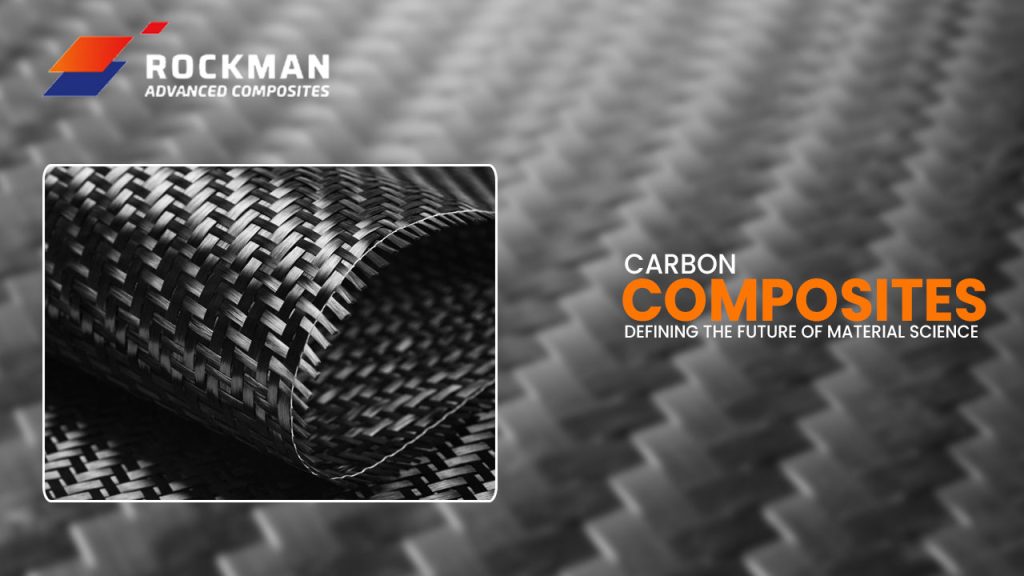In the world of material science, innovations are driving industries and carbon composites have emerged as materials that are defining the future of advanced engineering. These materials form the backbone of advanced engineering and are celebrated for their incredible strength-to-weight ratio, durability, and versatility. Revolutionizing multiple sectors, from automotive and aerospace to renewable energy and sports equipment, carbon composites are rightly termed the future of material science.
What Are Carbon Composites?
Carbon composites are made by combining carbon fibers with a polymer or carbon-based matrix, where the strong thermal resistance of the matrix is combined with the high mechanical characteristics of the carbon fibers. Carbon fibers are incredibly strong yet lightweight materials that when embedded in a polymer matrix form composite materials with extraordinary mechanical properties. The carbon fiber structure is primarily composed of interlocking carbon atoms that impart exceptional strength to the material.
Key Properties of Carbon Composites
The presence of polymer matrix in the composites binds the fibers together, distributes loads across the structure, and protects the material from environmental damage. Other major characteristics of carbon composites include retention of mechanical properties at extreme temperatures, high specific stiffness and strength, biocompatibility, and chemical inertness. Some key properties of carbon composites include:
High Strength-to-Weight Ratio – Carbon composites are extremely light in weight. These materials are lighter than metals like steel and aluminum, yet have a high strength-to-weight ratio and provide comparable, if not superior, strength.
Thermal Stability – Carbon composites have high thermal stability, hence these materials perform well under a wide range of temperatures and these materials can maintain their properties in both high-heat and subzero conditions. Carbon composites have much lower thermal expansion compared to steel, aluminium, and titanium.
Corrosion Resistance – Carbon composites unlike metals do not rust. This makes these materials ideal for applications in harsh weather environments.
Design Flexibility – Carbon composites can mold composites into complex shapes that allow for innovative designs and structures.
Fatigue Resistance – Carbon composites are also known to have excellent fatigue resistance, thereby ensuring longevity and durability in applications involving repetitive stress.
Applications across Industries
Carbon composite has become synonymous with modernity, as these materials find application across diverse industries. These materials find applications in nearly every aspect, from simple everyday objects to modern-day construction to complex structures like automotive, planes, and space science. These materials are immensely popular across industries due to their characteristics, durability, and strength, reduced energy usage during the manufacturing process, and decreased transportation costs. These materials outperform other materials like steel, cast iron, and concrete in terms of CO2 emissions, and above all these materials have a service life of about 150 years or more.
Aerospace – Carbon composites potential was initially recognized by the aerospace industry, as manufacturers used these materials to reduce the weight of the aircraft leading to lower fuel consumption and low carbon emissions. The use of carbon composites in aircraft enhances fuel efficiency as well as leads to improved aerodynamics and passenger comfort.
Automotive – These carbon composite materials are used in body panels and chassis components of the vehicle to boost agility and speed. Hence these materials are redefining efficiency and performance in the automotive world. Carbon composites are used in both luxury and mainstream vehicles to cater to stringent fuel economy requirements and reduce environmental impact.
Sports and Leisure – Carbon composites find great applications in sports and leisure fields, as these materials are used to make a wide range of sports goods ranging from bicycles, golf clubs, and tennis rackets to racing yachts. These materials are known for their lightweight nature and can withstand excessive stress. These properties make them ideal for sports and leisure fields.
Medical Devices – Another field that is making use of the benefits of carbon composites is the medical field, where these materials are used to manufacture imaging and prosthetics equipment. Due to their lightweight and durable features, prosthetic items made from this material provide users with enhanced comfort and mobility. These materials are also used in X-ray and MRI-compatible devices because of their radiolucent properties.
The Future of Carbon Composites
Driven by continuous advancements in material science and manufacturing techniques, the carbon composites future is bright. Technologies like chemical recycling and pyrolysis are grabbing attraction and are giving hope for a circular economy in composite materials. Nevertheless, nanotechnology integration like graphene and carbon nanotubes is further enhancing the composite properties. These technological innovations are further promising to deliver stronger, lighter, and more durable materials for future applications.
Recapitulation
Carbon composites have moved much ahead from being a material, as these materials are representing a paradigm shift in engineering and design. These materials are allowing industries to meet the challenges of this rapidly changing world with their lightweight, durable, and efficient materials. Carbon composites are going to play a key role in building a sustainable and innovative future, particularly with the advanced manufacturing processes and consistent research happening in this field.








